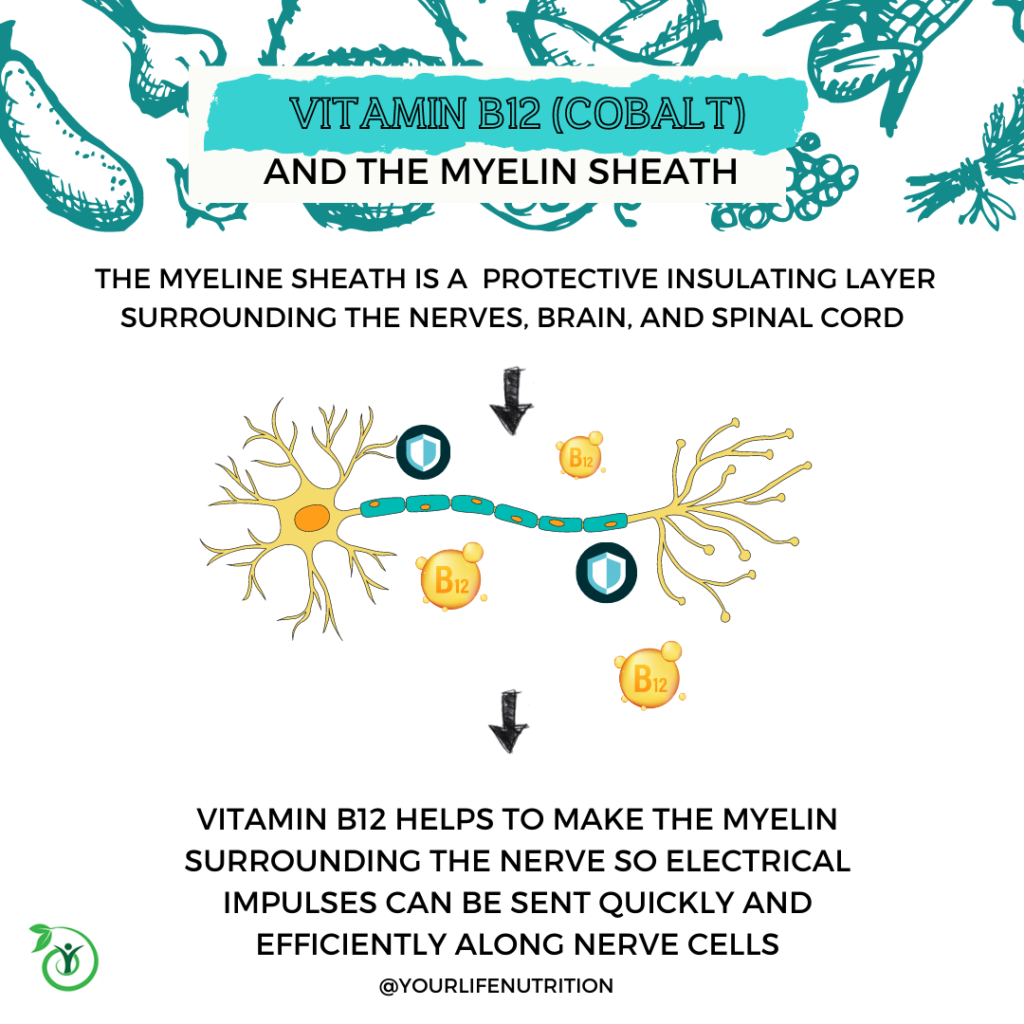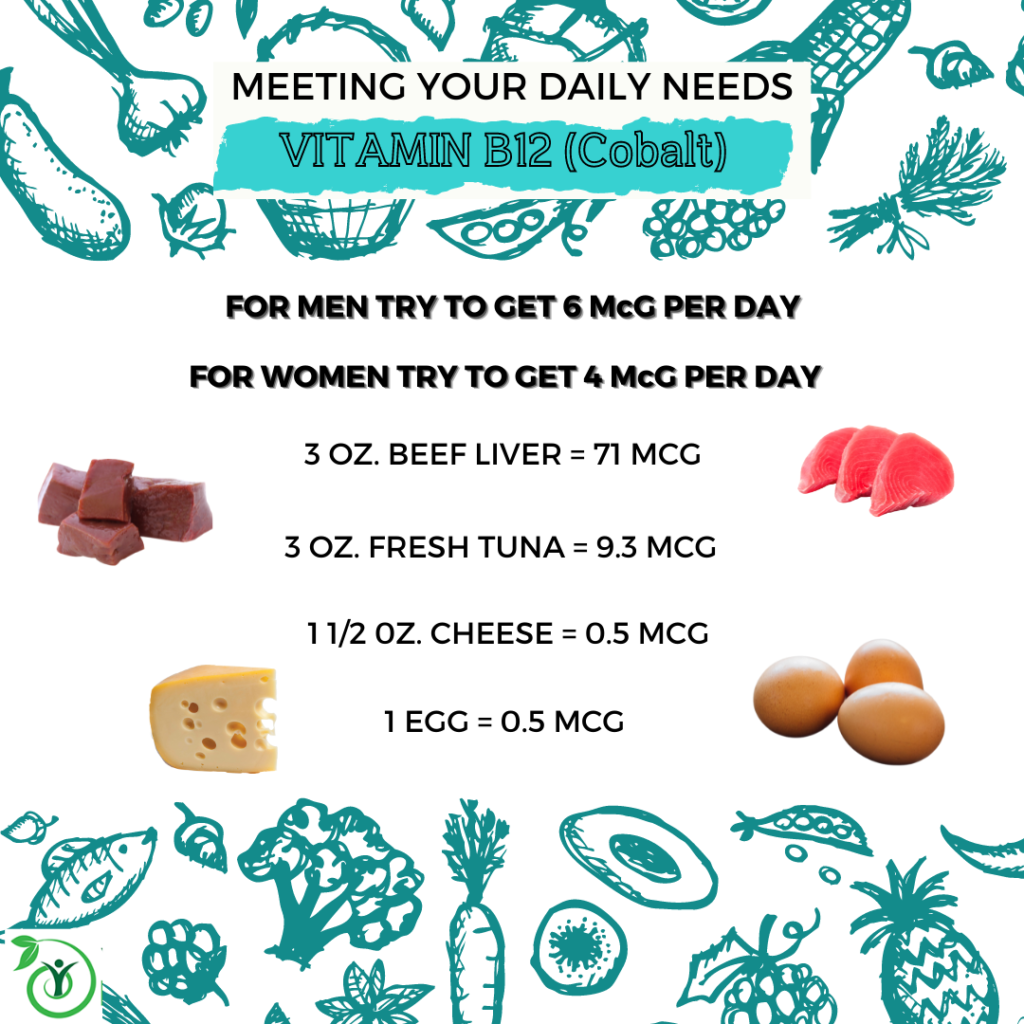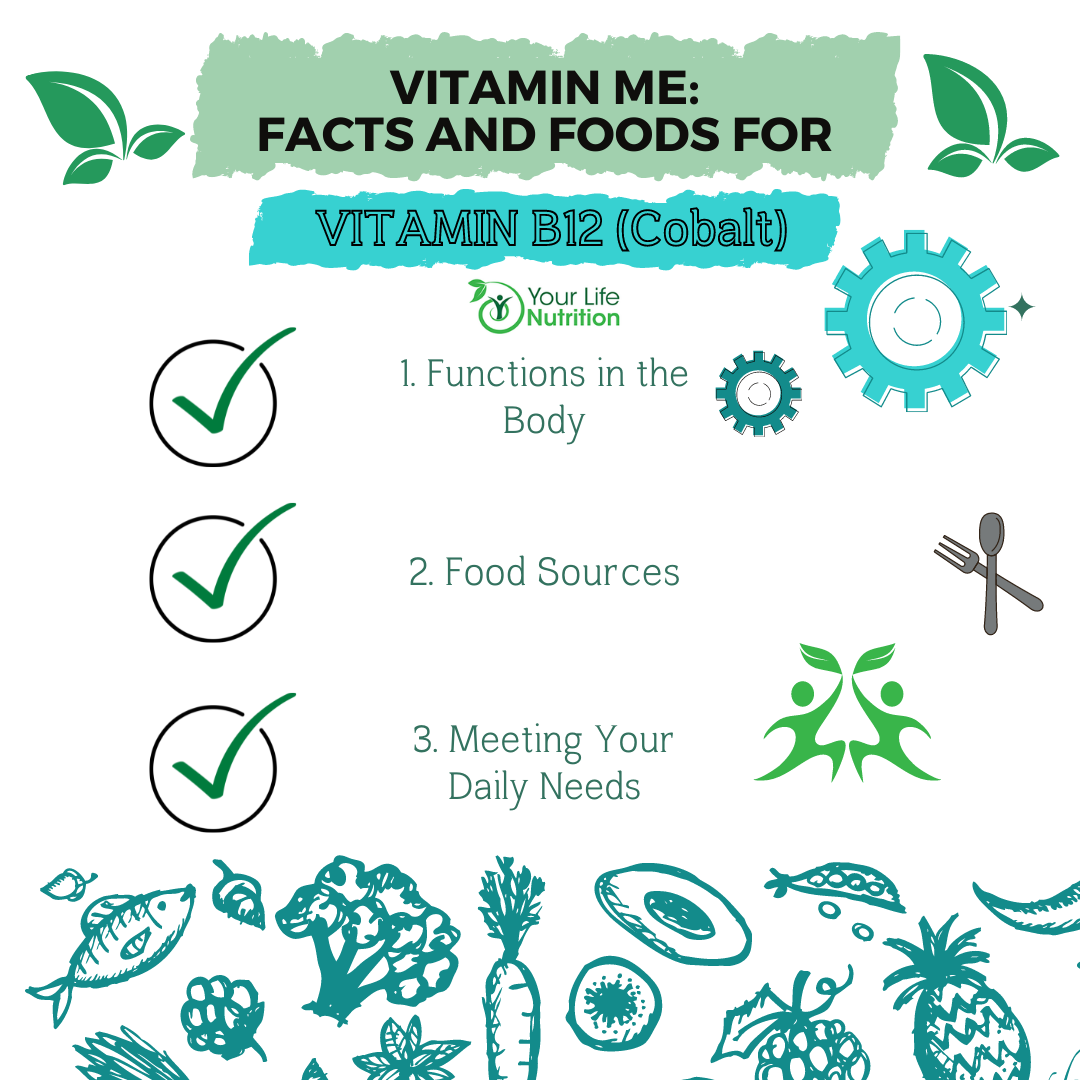Vitamin B12, also known as cobalt, is found naturally in animal products.1 This vitamin is important for building red blood cells, DNA, making a protective myelin sheath for nerves, and brain development.1 Myelination of nerves is very important to keeping the nervous system safe and efficient.2 The way the brain communicated to the rest of the body is through the nerves which send electrical signals down a line, similar to an electrical cable plugged into the wall.2 Have you ever noticed these cables are covered by a thick plastic? The reason is because the electricity needs to be contained, if it was not insulated with this covering, the electric current would go all over the place and cause a lot of damage to your home. Our nerves are the same way, they need a coat of protection to keep these electric signals from going out of bounds.2 This is what myelination is and B12 is very important for the processes of making this protective coat.2


When we eat protein, the B12 bound to this macronutrient needs to be freed in order to enter our bloodstream.1 The way it does this is with the help of hydrochloric acid and enzymes in the stomach.1 However, after it is freed from the protein it still cannot be digested.1 Why is this? Well, it has to combine with another protein called the intrinsic factor which enables it to be absorbed in the small intestine.1 Imagine getting dropped off at an amusement park without a ticket to get into the park. The intrinsic factor is like a friend who meets you there and gives you access to enter the park, or in B12’s case, the small intestine.

So, we know the B12 is attached to proteins, so it makes sense that the majority of foods we find B12 in are animal products. Here is a list of some great sources of cobalt to include in your diet. For men, try to get 6 mcg per day and 4 mcg per day for women.2
- Beef liver = 71 mcg per 3 oz.
- Clams = 17 mcg for 3 oz.
- Tuna= 9.3 mcg per 3 oz.
- Salmon = 2.6 mcg per 3 oz.
- Beef, Ground = 2.4 mcg per 3 oz.
- 2 % Milk = 1.3 mcg per cup
- Fat-free, Plain Yogurt = 1.0 mcg per 6 oz. container
- Cheese = 0.5 mcg per 1 ½ oz.
- Egg = 0.5 mcg in 1 egg
- Turkey Breast = 0.3 mcg in 3 oz.
- Tempeh = 0.1 in ½ cup
In the United States, the average person is able to get adequate B12 from foods like these.2 When an individual does experience a deficiency, it is often due to inadequate intrinsic factor which impairs the ability to absorb B12.2 Another big concern for higher risk of getting B12 deficiency is for those who follow a vegan or vegetarian diet since the only natural source comes from animal products. Some foods, like marmite yeast extract, non dairy milks, and cereals are fortified with B12 to help these individuals meet their daily needs. If you are still concerned that you are not meeting your daily intake, talk to your physician or a registered dietitian about finding a supplement.


When deficiency occurs, it can cause megaloblastic anemia, low white and red blood cell counts as well as platelets, swollen tongue, fatigue, pale skin, dementia, or numbness and tingling.2 It is important to make sure you are eating a diet rich in these B12 foods, however, if you start to experience symptoms of deficiency, it may be wise to talk to your physician to make sure you have abundant intrinsic factor to absorb it.2 Lack of intrinsic factor is usually caused by pernicious anemia, surgery in the GI tract, or as a side effect of taking certain medications.2 The important thing to remember is to be aware of the foods naturally containing B12 and try to incorporate them into your diet everyday. When you do this, you will be keeping your nerves, blood cells, and brain happy and healthy.
References:
- Vitamin B12. The Nutrition Source. https://www.hsph.harvard.edu/nutritionsource/vitamin-b12/. Published June 4, 2019. Accessed February 2, 2022.
- Office of dietary supplements – vitamin B12. NIH Office of Dietary Supplements. https://ods.od.nih.gov/factsheets/VitaminB12-HealthProfessional/#:~:text=Average%20daily%20intakes%20of%20vitamin,mcg%20for%20women%20%5B31%5D. Accessed February 2, 2022.
Post created by University of Akron dietetic student intern: Michaela Campbell





